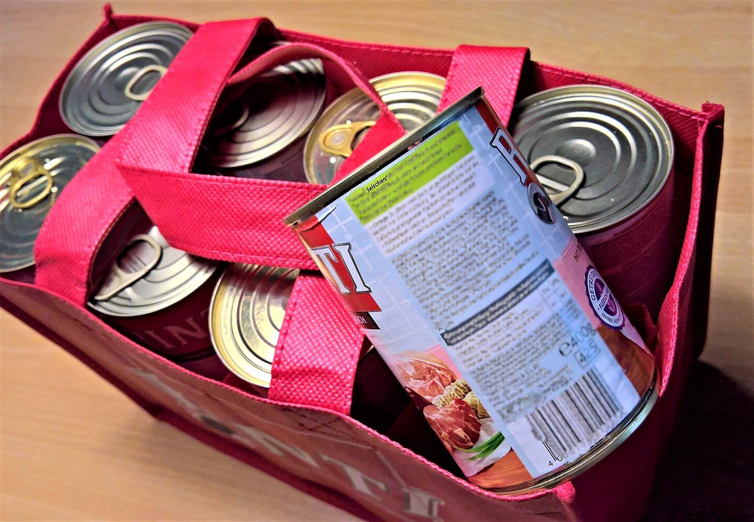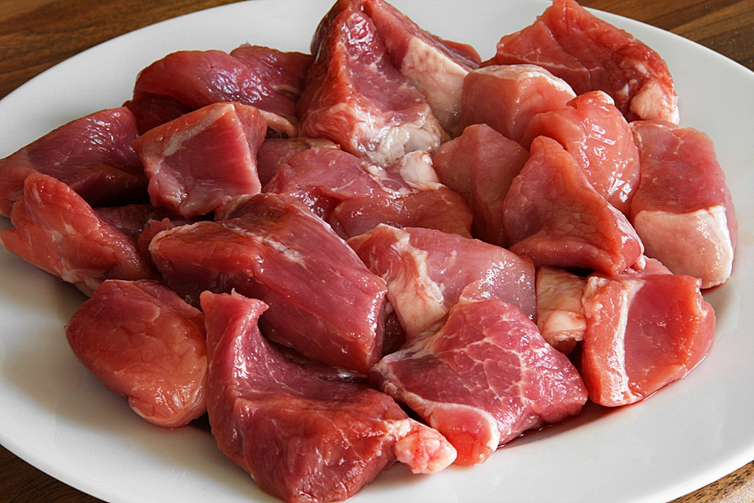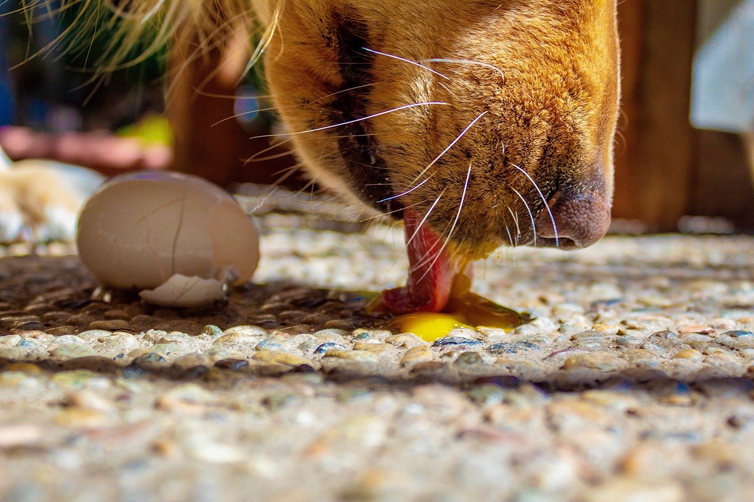The Dog’s Diet: A Bone of contention?
‘Food, glorious food!’ – yes, we’re going to be looking at the often thorny, emotive, debated and fascinating issue of our furry friends’ diet. In fact, this issue is probably even more contentious than what to feed our human babies. However, we are going to try to make it easier for you. But first, let’s understand the history of dog food.
HEALTH AND WELLNESS

Posted by bravectosouthafrica – 12 April 2021
HISTORY OF DOG FOOD
(Ref whole-dog-journal.com)
When dogs, or rather wolves, were predatory carnivores, around 18,000 years ago, they hunted and killed in packs. The kill was rich in proteins, fats and of course, bones, with some plants and vegetation. They had digestive systems that could cope with this diet, which was, as you may imagine, also rich in bacteria.
As dogs began to interact with humans, their diet began to change: humans gave them starches, milk and fat. Through evolution and over many thousands of years, their digestive systems began to adapt to this diet.
In 1860, when a British sailor called James Spratt noticed stray dogs gobbling up sailors’ dry biscuits (consisting of a combination of flour, water and salt) he began to make and sell them and the first commercial dog food was born. Only the upper and middle classes could afford them.
In 1908 more nourishing biscuits (with the addition of malt and milk) were available for dogs.
In 1922 the first canned dog food was manufactured, consisting largely of (brace yourselves) horse meat.
In 1956 the first dry kibble was available.
Our point here is that ancient wolves’ digestive systems could easily deal with a raw meat and bones diet; but as their diet changed, over thousands of years, they adapted to cope with tinned, kibble and cooked food. The Big Question is: Can modern-day dogs cope with Neanderthal dogs’ diets? Perhaps the answer is not necessarily, no?
RAW VS COOKED VS KIBBLE (DRY) VS CANNED (WET)

As a dog owner, you have some serious, and some not-so-serious, decisions to make regarding his/her diet. It’s easy to choose his/her new toy or winter jacket but, after looking at your food options, you will quickly realize that your choice may not be easy.
We’ve reviewed the options, done careful research and have come up with a summary of the Great Dog Food Debate. As you will soon see, we cannot give you definitive answers, but we can give you enough information for you to make an informed decision for YOUR dog, because he/she, like each human being, is unique. The key words are:
COMPLETE AND BALANCED

All diets should contain all the foods and nutrients your dog needs (i.e. complete) and there should be a good balance of these in your chosen food. There is also a very important mantra:
CONSULT YOUR VET FIRST!
When deciding on any new diet for your dog, you should ask your vet’s opinion and advice.
WHAT SHOULD I CONSIDER WHEN CHOOSING MY DOG’S DIET?
Health

A balanced, nutritious diet is critical in maintaining your dog’s good health. Your vet will check his/her overall health and advise you. Pets with diseases such as diabetes, cancer, kidney/heart/liver problems, should be given specialized diets.
Activity Level
Working or service dogs will need more calories per day than little Gypsy (our article’s example), sitting in the lounge most of the time in her fancy new dog-bed. Some breeds are naturally more active than others, e.g. a Jack Russell vs a Bull Dog.

Age
Puppies have different nutritional requirements from mature dogs. Seniors may need certain supplements to counter the effects of old age, e.g. Arthritis or heart problems.
Puppies (8-16 weeks, approx.)
Take puppy for her first check-up and inoculations at the vet and discuss feeding.
Ask the breeder what your puppy has been eating. (This also applies to dogs of any age who you’re adopting.) Feed this for up to around 16 weeks of age. We recommend a high-quality commercial kibble especially for pups. Raw food is not recommended – their little tummies cannot cope with any possible high bacterial load. Feed 3-4 times a day.
16+ weeks
Introduce your choice of food. Watch her carefully each day for any problems. You should transition from her baby kibble to her teenage diet, slowly: add a little of your chosen diet to a smaller-than-usual amount of her baby kibble, increasing the amount of her new food slowly, until at about 20-21 weeks she is eating only her new food. Feed around twice a day.
Adults (12 months +)
Feed twice a day with complete and balanced food.
Senior Dogs
Getting old ain’t easy, for humans or dogs!
Consult your vet. Depending on your ‘pensioner’s’ health, a specialized diet may be necessary for conditions such as arthritis, joint issues and any ongoing problems. Keep an eye out for any new health issues. Smaller, more frequent meals with possibly more fiber and specific nutrients may be required.
Size
Large dogs will obviously need more food and different nutritional requirements compared with a tiny Yorkie. Overweight dogs will need a diet designed to help them lose weight. It is not always as simple as giving them less food.
Allergies
Some dogs are allergic to certain ingredients, e.g. soy, milk, wheat, gluten, just like humans. If your dog is often unwell or perhaps has skin conditions, it is possibly an allergy. Your vet may run some tests and advise you.
Taste
As with humans, dogs like tasty food. But what is tasty to a dog may not be tasty to us. Gypsy also likes a bit of variety: What is gobbled down for a month or two, may suddenly be rejected. Perhaps she’s hinting that she’d like a new flavour?
Your Time
Some diets, e.g. home-cooked, take more time to prepare than canned food, which requires operating a tin-opener. If you work full-time outside your home and have young children, for instance, time may be precious for you and you may choose the kibble option. As long as her diet is ‘complete and balanced’ (close to impossible to do at home), Gypsy will thrive.
Expense
There’s a fallacy in our society which goes: ‘The most expensive is always the best.’ However, there’s also the saying: ‘Goedkoop is duurkoop’. Some imported kibble, for example, is expensive and may be the best for your dog, but not necessarily. Some of the cheaper kibbles may be fine for your dog. But, most of the expensive kibbles may contain more of the better quality nutrients, like meat protein, than the cheaper ones. You should decide what you can afford based on your dog’s needs.
WHAT ARE MY OPTIONS?
There are 4 main types of dog food. Here’s a brief description of each:
Kibble (dry)

This is usually the most economical and quickest to prepare; it has a long shelf-life, requires no refrigeration, is good for dogs’ teeth and is usually complete and balanced.
Most of us must consider our budgets. As we mentioned before, the most expensive, imported kibble is not necessarily the best for your dog; but it may be. Speak to your vet first. Your dog may have certain health issues which may require a specialized diet, only offered by certain brands, for example prescription, weight loss, joint, digestive, liver, dental, skin and age concerns.
The following will assist you in making your choice:
- Read the labels – protein should always be listed as the first ingredient
- Look at the order of ingredients: the first should be meat/protein. The minimum percentage should be 12%, maximum around 30%
- Look for a single, named meat source as the main ingredient, e.g. chicken, and not a generic term such as ‘meat’.
- Check the grains. The best ones for dogs are quinoa, barley, oats, millet, brown rice. Avoid fillers which are not foods for dogs, e.g. corn, wheat (gluten).
- Brands which care about the best nutrition will be more specific in the ingredients list, e.g. ‘soybean fat’ instead of ‘fat’.
- Watch out for possibly harmful ingredients such as BHA, BHT and ethoxyquin. Go for natural vitamins and preservatives which will benefit your dog.
- ‘Holistic’ dog foods are supposed to be 100% natural.
- Check on your dog’s waste product, at the ‘other end’. It should be firm with no blood or mucus.
Canned (wet)

This too has a long shelf-life, is easy and quick to prepare but can be expensive. Most canned dog foods are around 70% water, so Gypsy has to eat more to get sufficient nutrients. Many owners mix kibble with some canned food for a change and/or a treat.
Basically, a tin-opener is all you need. Canned dog food is convenient and quick and is usually complete and balanced. Check the label. It contains far more moisture (around 70%) than dry food (approximately 10%). Wow! Quite a difference. But water/moisture is heavy and bulky. Wet food may contain around 10% more protein than dry food. Generally, the higher carbohydrate content in kibble (which is needed to hold each little kibble together) means more calories than canned food.
Canned dog food may work out to be more expensive than kibble, so what many people do is to avoid the choice and give him/her both. There is some controversy about whether dry food is better for your doggie’s teeth than canned food (dogsaholic.com), but many vets believe that the crunchy, dry texture of kibble tends to clean the teeth better.
Home Cooked

Some owners prefer to shop for and cook fresh food, without realizing how difficult it is to balance. You are then in control of the ingredients and nutrients. You should do some research first (coming up) to ensure that the food is complete and balanced. This food is expensive and time-consuming to prepare. We’re not talking about left-over lasagna and apple pie here. Chat with your vet as many pet owners make assumptions about what is right for their dog without understanding the science and knowledge that goes into developing pet diets.
PROs
- Your dog’s specific needs can be met.
- Meals can be complete and balanced, but this takes some research and care.
- You will get a lot of satisfaction out of preparing your dog’s meals. (You can also boast to partner, family, friends, moms in car park, etc.)
CONs
- Of course, one of the main problems with this diet is that it’s going to use up quite a lot of your precious time.
- These meals are not cheap.
- Meals may not be complete or balanced unless you take care.
Before taking the leap to home-cooked food, read the following:
- Make sure your recipes are complete and balanced. Check with your vet. A nutritional deficiency may only be obvious over time.
- Make sure you check the list of possibly toxic ingredients
- Read your recipe carefully. Some are confusing, vague, misleading or inaccurate.
- Shop for your ingredients. Buy the best that you can afford, although your dog is unlikely to complain if you feed him/her rump instead of fillet.
- Don’t forget your proportions:
Protein approx. 50%
Veggies approx. 25%
Carbs.(Including rice, grains) approx. 25%
- Sources of protein include beef, turkey, chicken, lamb, pork, tuna, egg (not too much), organ meat, e.g. liver, kidneys, but not too much. Always buy human grade meat. Your meat should be as lean as possible – remove excess fat. Chop the meat up small or mince it in a food processor.
- Vegetables: carrots, green beans, spinach, peas, cucumber, pumpkin, squash, sweet potato. Chop up small or use a food processor.
- Carbohydrates: brown rice, quinoa, oatmeal etc.
- Calcium and phosphorus: dogs’ bone-meal, dairy products.
Put your meat in a pot and fry in a little oil until it becomes grey in colour and is cooked through. Put the rest of the ingredients in the pot and cook for approximately 10 minutes. (If you are including brown rice, it should be cooked in boiling water for around 30 minutes before stirring in.)
Raw: BARF (bones and raw food) and RMBD (raw meat-based diet)

There is much controversy around these diets, which we’ll explain later. Check with your vet first as a lot more goes into this than simply giving your dog raw meat. This diet consists of raw meat, raw bones, veggies and other nutrients. It is expensive and takes time to shop for the various ingredients, which must then be chopped. This may (depending on your choice of ingredients) be complete and balanced but must be refrigerated and only keep fresh for a couple of days. These diets can, however, be frozen.
The BARF diet was started by an Australian vet, Dr Ian Billinghurst, who studied during the 1970s. He often wondered why the dogs he saw around him seemed so much less healthy than the dogs he remembered from his childhood. Most of the dogs from his childhood would have been fed raw meat and bones. The dogs he saw in the 1970s were, and still are, fed on commercial kibble and tinned dog food. He saw that many of these dogs were suffering from skin problems, bad teeth, smelly breath, runny eyes, sore ears and worms. So, he began to experiment (in a good way) with his own dogs, feeding them with different diets, both commercial and raw. He noticed that his dogs on the raw meat diet seemed much healthier than before. He went on to publish a book about his diet, which he christened: BARF. The thinking behind raw diets is that they closely resemble the diets dogs would have had in the wild, consisting of raw organs, raw meat and bones with bits of the plants and vegetation they found around them.
What goes into BARF and RMBD dogs’ diets?
We’re glad you asked! They usually contain raw organ meat, raw muscle meat, raw bones (ground into a powder), eggs, fruit, veggies and a dairy product like yoghurt. In other words, as close to ancient wolves’ diet as possible.
PROs
- Many proponents of raw food diets report that their dogs are healthier, have shinier coats, cleaner teeth, healthier skin, more energy and smaller bowel movements. (That MUST be a plus!)
- These diets are available commercially, saving you time, but you have no guarantee that these are complete and balanced.
CONs
- The main potential problem with BARF and RMBD diets, according to many vets, is that raw meat carries bacteria, which may make dogs very sick when they eat it. A compromise, from a Dr Reichertz (ref pethealthcare.co.za), may be to cook the meat for a short time, until it becomes grey/brown in colour and is cooked through, killing any bacteria.
- Pet -safe bone meal, to supply vital calcium, potassium and other micronutrients to your dog, is also an option instead of whole bones.
- These diets may sometimes be unbalanced and incomplete. Busy moms and dads may not have the time to check carefully.
- Dogs may choke on a piece of bone or be injured internally by a bone splinter. The intestine can also be injured as the mass of bone fragments makes its way along the alimentary canal. Most vets will advise you not to give your dog raw (and NEVER cooked) bones.
- And, as we have already pointed out: modern day dogs do not have the same digestive systems, able to deal with large amounts of raw protein, fat and bone, as ancient dogs had.
WHAT CAN’T MY DOG EAT?

There are many foods that are great for humans but can be toxic to dogs. The following foods are poisonous to dogs. This list may not be exhaustive: we cannot guarantee that there aren’t other foods which may be toxic.
- chocolate
- grapes
- raisins
- onions (not even in a sauce)
- garlic
- processed meat
- citrus fruit and juice
- milk
- salt
- alcohol
- avocado
- Xylitol (a sugar alternative)
- caffeine (in tea, coffee etc)
- too much fat/oil/sugar is unhealthy
Ref: yourpurebredpuppy.com
HOW MUCH OF EACH FOOD AND NUTRIENTS SHOULD I AIM FOR IN MY DOG’S FOOD?
Whole books have been written on this subject, but we’ll give you the basics. If you want to study this further, we suggest you go to the websites suggested. Always check the label on the product, for which most of us will require a magnifying glass.
Protein (usually found in meat, chicken etc.)
Puppies need approximately 22% minimum, 32% maximum of their diet to be made up of protein. Adult dogs require approximately 15% minimum, 29% maximum protein.
Fats and Oils
Puppies need approximately 10 – 25% of their food to be fats.
Adult dogs need around 14% of their diet to be fats.
Carbohydrates (starches)
Puppies require about 20% of their diet to be carbohydrates.
Adult dogs need 50% maximum of their food to be carbohydrates.
In addition, all dogs require vitamins and minerals in their diet for their health and welfare. Do not panic! Most commercially available dog foods from a reputable source will be balanced and complete. When you are preparing either raw or cooked food for your dog, you need to be aware of these requirements – remember your dog is not a wolf. They have evolved over thousands of years and will no longer get everything they need from raw meat alone.
IN CONCLUSION
We wish you well on your journey towards finding the most suitable food for your dog’s unique being and for you and your family.
When in doubt, consult your vet. They are the most qualified to suggest a food that meets the unique needs of your fluff friend.
Subscribe to our Newsletter
Get to know your furry friend better! Sign up for all things dog- or cat-related.
The Hairy Facts about the dreaded hairball
12 April 2021
Help! My dog’s barking mad! Volume 2
12 April 2021
Your Itchy, Scratchy Cat – All About Cat Skin Problems
12 April 2021
The Dog’s Diet: A Bone of contention?
01 April 2021
Mango Fly Worms: How to Spot and Eliminate them
Posted on November 28,2019
Managing Mange And Mites In Your Dog
Posted on June 11,2018
Why Do Cats Purr and How? Learn What Your Cat Is Saying
Posted on October 14,2020
How to Get Rid of Ear Mites in Dogs
Posted on November 06,2019









